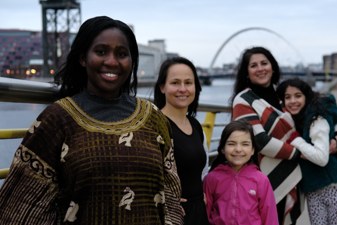About your charity
Before you can apply to become a charity, you need to be clear about what your organisation is for, how it will work and what you will aim to do. In this section, you'll find out what you need to think about when describing what your charity's aims will be.
What will your charity do?
The way that charities operate and function is set out in a piece of law called the Charities and Trustee Investment (Scotland) Act 2005 (The Act 2005). This law sets out the charity test, which is the basis for how OSCR assess all applications to register a Scottish charity. It requires that a charity:
- must have only charitable purposes
- must not use its assets for non-charitable purposes, and
- must provide public benefit.

OSCR must look at whether the charity's activities involve any private benefit, or disbenefit to the public, and whether there is any undue restriction on gaining access to the benefit the charity provides - such as fees or membership.
Charitable purposes
Your charitable purpose is the reason your charity exists. Everything your charity does must be to achieve that purpose. There are 16 purposes listed in The Act 2005, which are:
- the prevention or relief of poverty
- the advancement of education
- the advancement of religion
- the advancement of health
- the saving of lives
- the advancement of citizenship or community development
- the advancement of the arts, heritage, culture or science
- the advancement of public participation in sport
- the provision of recreational facilities, or the organisation of recreational activities, with the object of improving the conditions of life for the persons for whom the facilities or activities are primarily intended
- the advancement of human rights, conflict resolution or reconciliation
- the promotion of religious or racial harmony
- the promotion of equality and diversity
- the advancement of environmental protection or improvement
- the relief of those in need by reason of age, ill-health, disability, financial hardship or other disadvantage
- the advancement of animal welfare; or
- any other purpose that may reasonably be regarded as analogous to any of the preceding purposes.
Describing your charitable purpose
Your charitable purposes should explain WHAT your charity is going to do, WHERE you want to do it, WHO will benefit and HOW you are going to do it.
Your purposes should be clear and straightforward so that people can easily understand what your charity is there to do.
Make it a good reflection of your aims, but don’t be so specific that you restrict your organisation from adapting or growing.
Example
You describe your purpose as “The provision of digital literacy skills to over 65-year olds in Hamilton to increase digital participation and inclusion.”
This restricts you to providing your service to a specific age group in one town. It might be better to describe it as “The provision of digital literacy skills to adults in Lanarkshire to increase digital participation and inclusion.
This allows you to reach a wider range of people, and to grow and change your work over time while still allowing you to focus on more specific groups in your activities.
If the work your charity is doing changes over time you can apply to OSCR for permission to change your charitable purpose, but the process could take a while.
If you can future proof your purposes it means your organisation can adjust more quickly.
Public benefit
Public benefit is the way in which a charity makes a positive difference to the public.
Not everything that is of benefit to the public will be charitable and this doesn’t mean you have to benefit the entire public. How many people you benefit and who they are will depend on the charitable purposes set out in your constitution. Most charities are established to benefit a particular group.
In deciding whether an organisation is providing public benefit, OSCR needs to consider:
- If there’s any disbenefit (detriment or harm) to the public from the organisation’s activities.
- If there’s any private benefit (to anyone other than the benefit they receive as a member of the public).
OSCR will also look at whether your organisation restricts access to the benefits it provides and, if it does, whether the restriction is undue. This could be a restriction which limits who can access the benefits (or services) that the organisation provides.
The main restrictions that OSCR look at are charges and fees for services, geographical area and any limits on who the charity will help.
For more information see OSCR's guidance on undue restrictions.






